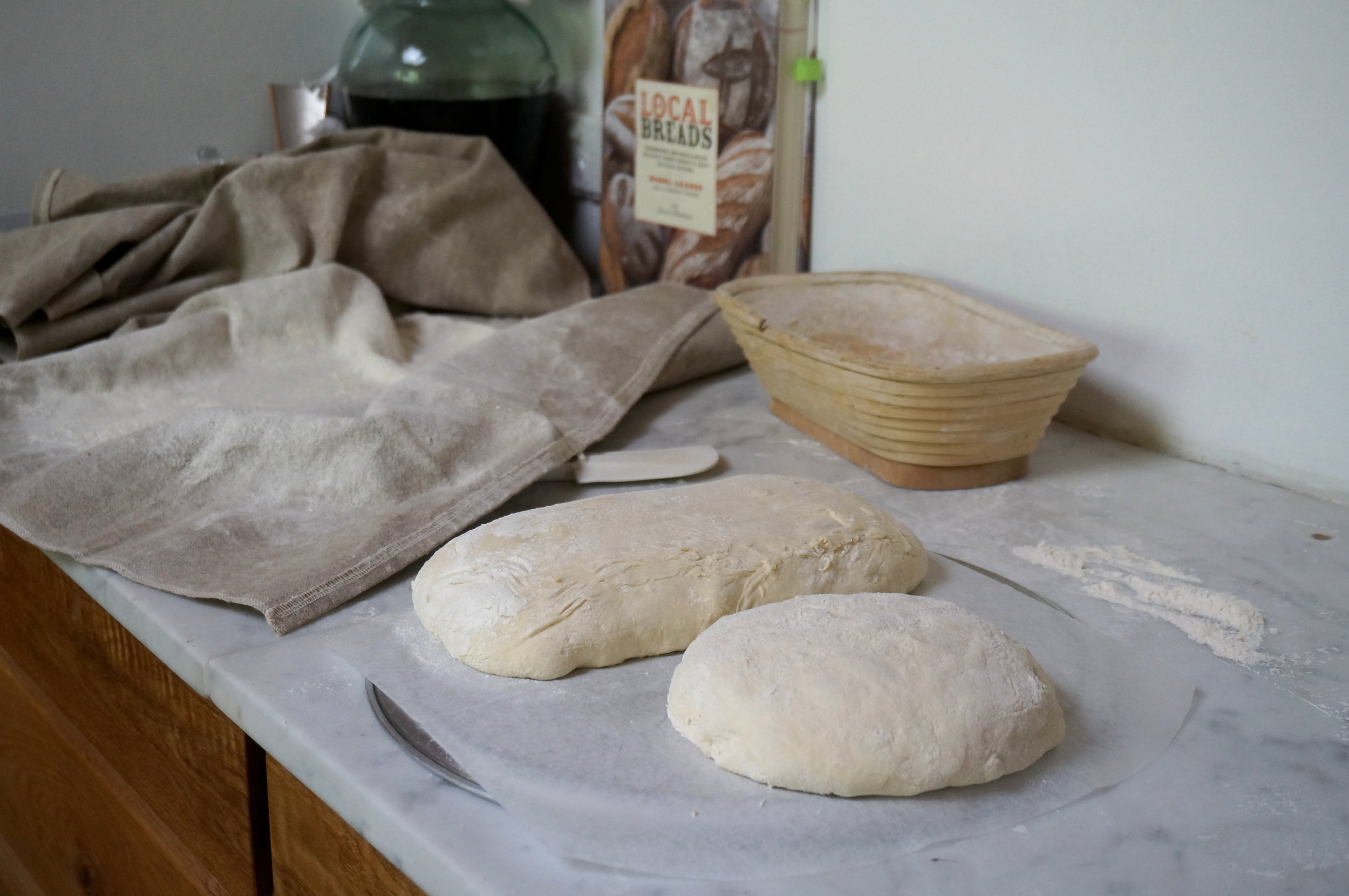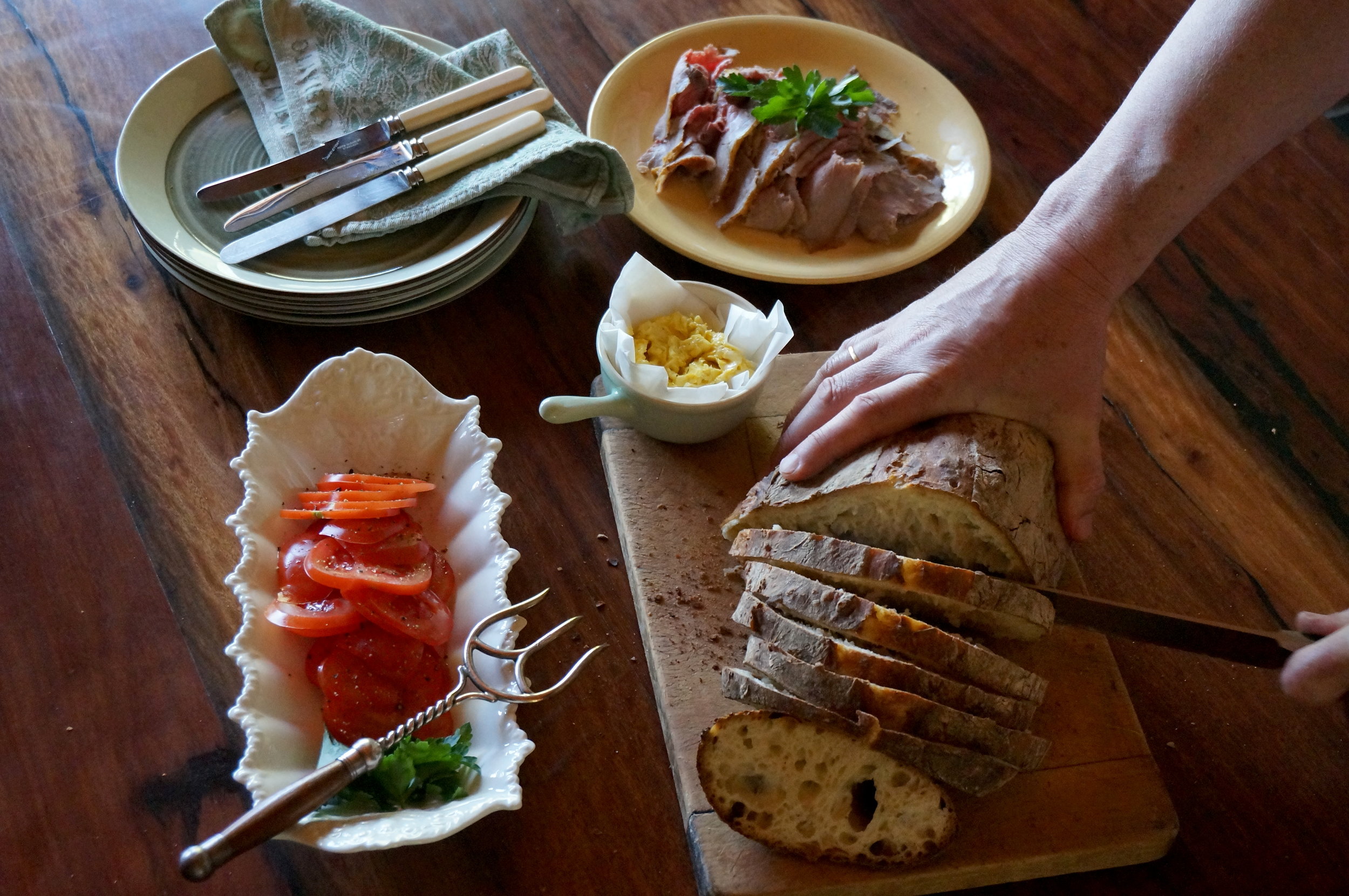Turmeric Butter and Thoughts from my Father, the Sourdough Scientist
This is the third and final piece I wrote for Food For Thought, a wonderful website celebrating food made with intention and craftmanship...with thought. You can read my other posts on bread on their website (here - scroll down!) but I wanted to share my final article here today along with a few more photographs from that late November Saturday. Happy bread making and/or eating, folks.
.....
My grandfather can tell you everything you need to know about Bob Hope, Bing Crosby and Dorothy Lamour’s “Road To…” movies. And my father-in-law will gladly take you on a history tour of all the buildings in Hong Kong. We’re all nerdy about something. My father is a science nerd, geeking-out over hypotheses, conclusions and everything in between. Dad’s geekery (a true scientific term, I assure you) is a glorious thing because it has lead to a fascination with gastronomy.
Food experiments are (mostly) edible, and so my family has been nothing but encouraging of Dad’s endeavours. He began with mixology (which had tasty, if somewhat foggy, results) and then moved onto yeasted pizza dough in his newly constructed, outdoor woodfired oven, playing with caramelisation and other cooking-related alchemy. Lately it’s been bread. And not just any bread…sourdough.
Good sourdough is important to me as both a Dietitian and a lover of food. Many who believe bread to be "bad" (or who react poorly to mass-produced supermarket bread) can thrive on sourdough produced in the traditional method (see my previous articles on bread and nutrition for more information). As a result, bread is free to resume its rightful place as a staple in our diet. This is important. A slice of authentic sourdough bread, dipped in extra virgin olive oil and sprinkled with sea salt brings an insurmountable amount of pleasure. And I know my father agrees.
Dad became a home sourdough baker two years ago, when this style of fermented bread was just beginning to rise in popularity (a fact that continues to impress me, as he is not exactly one to be at the forefront of trends). Much bread has been broken in my parents’ kitchen these past two years, more than I can ever remember as a child growing up, and watching his loaves evolve has been a joy. In the early days, soggier slices became toast at breakfast, and the very crusty supported casseroles. These days, Dad’s now perfect bread assists us in intently studying the juices of a slow-roasted lamb shoulder. It is as though his bread was explicitly baked for the very purpose of mopping up pan juices. Dad’s baking habit is important to our family and I know it’s incredibly important to him, and not solely because he gets delicious loaves out of his work. Despite Dad’s affection for pretty much all food, I know that his bread is more than a vehicle for his one true love, peanut butter. And so I asked him why. “Why do you keep coming back to your doughy craft week after week?” For Dad, it begins with a starter named Sassy.
You might be familiar with the term “starter”. It is a mix of flour, water and bacterial culture, and it is what defines sourdough bread. Dad’s starter is called “Sassy”. Sassy lives in the fridge and every Wednesday she is fed a mix of flour and water. When my parents go on holiday, I feed Sassy myself, and even when I mess up she comes through with the goods. Sassy is resilient and that is part of her charm.
“For some unknown reason, many people think making sourdough bread is harder than it is”, Dad said last weekend as we were sitting at the kitchen table, waiting for his loaves to bake and talking bread. “I was one of those people. But it’s not.” Baking sourdough is a process that encourages patience, dedication and intuition. The key, it seems, is to just start. Then watch, taste and learn, like a scientist. With instructional material available in books, classrooms or online, you can make your own starter. Alternatively, you might obtain a more seasoned starter from a generous baker. Dad received his sample from a local baker who was producing the most heavenly loaves and ran the occasional course on sourdough. Maybe I’m biased, but Dad’s bread is totally better than those parent loaves now.
At the heart of it, Dad is a geeky scientist, and this sourdough business is just an extended experiment, as he observes, adjusts, deduces and spreads it all with butter. He finds the process interesting, challenging and rewarding. It is also comforting and calming. Caring for Sassy and selecting how many loaves to bake (“which hungry friends am I feeding this weekend?”), then forming the dough, stretching, proving and folding… it’s a meditative practice, one that is good for the soul. And this tradition, this ancient act, is important to Dad. He believes we need to keep old knowledge alive, from baking sourdough bread to saving seeds and supporting bees. Did I mention he recently bought a backyard beehive? That’s my Dad.
A little while ago I tagged along, observing one of Dad's weekend bake sessions. These photographs are from that day.
We served sourdough bread warm from the oven with turmeric butter (for which there is a recipe below), along with cold roasted beef, sliced tomato, freshly cracked black pepper and parsley. I suggest you do the same, with a homemade loaf (try Simone’s sourdough recipe) or one from your local sourdough baker. We love Flinders Sourdough. And we really love Dad's bread.
Turmeric Butter
Serves 4-6
50g Quality Lightly Salted Butter 15g Fresh Turmeric Freshly Cracked Black Pepper
Let the butter soften out of the fridge for a few hours (depending on how warm it is in your corner of the world) then place it in a mixing bowl. If it’s not softening, grate the butter into the bowl. Use a fine microplane grater to grate the turmeric onto the butter. Add freshly cracked black pepper to taste and mix well. Taste and adjust seasoning as desired (more turmeric, salt, pepper).
Note: turmeric stains, so be careful what your touch and what serving vessels you use. Gloves are a good idea.
Turmeric talk: Turmeric is a fantastically anti-inflammatory, anti-disease ingredient. Combining black pepper with turmeric enhances its potency, so be sure to do this whenever using the spice. You can use ground turmeric if you wish but I am obsessed with the mustardy flavour of fresh turmeric. Similar in appearance to fresh ginger, you should be able to hunt down turmeric root in gourmet or Asian grocers.





